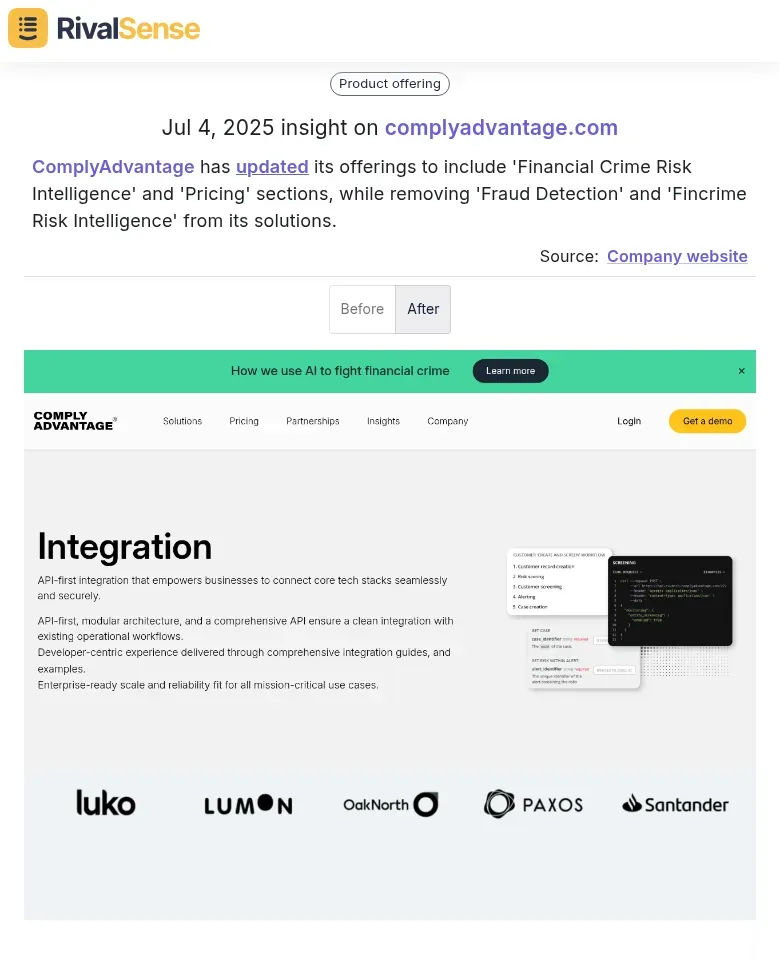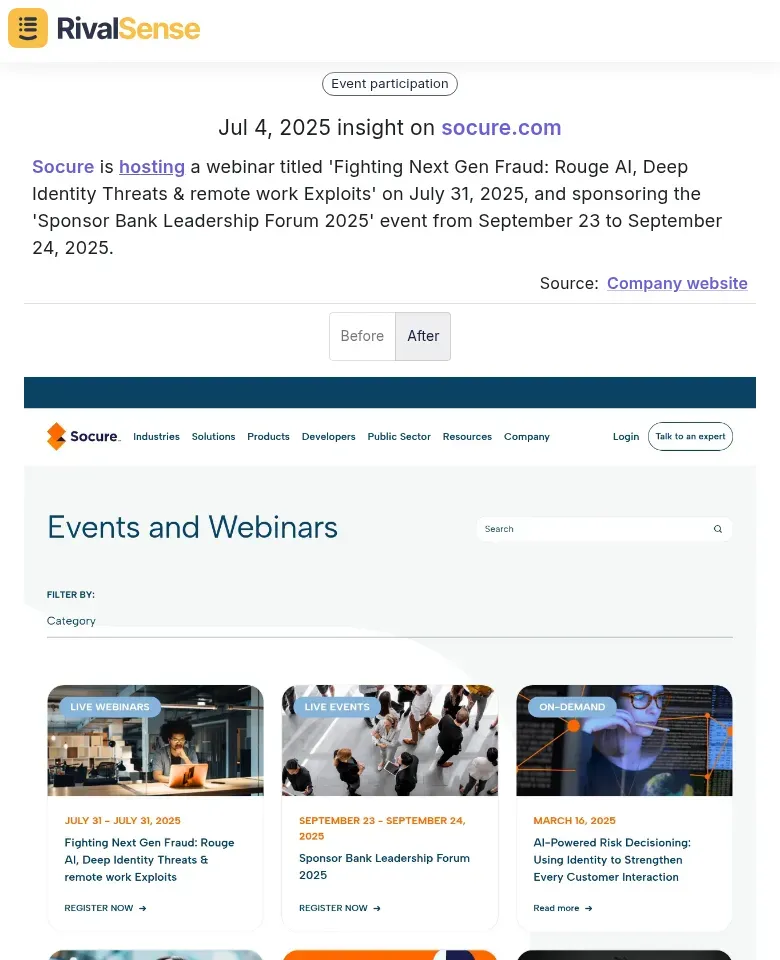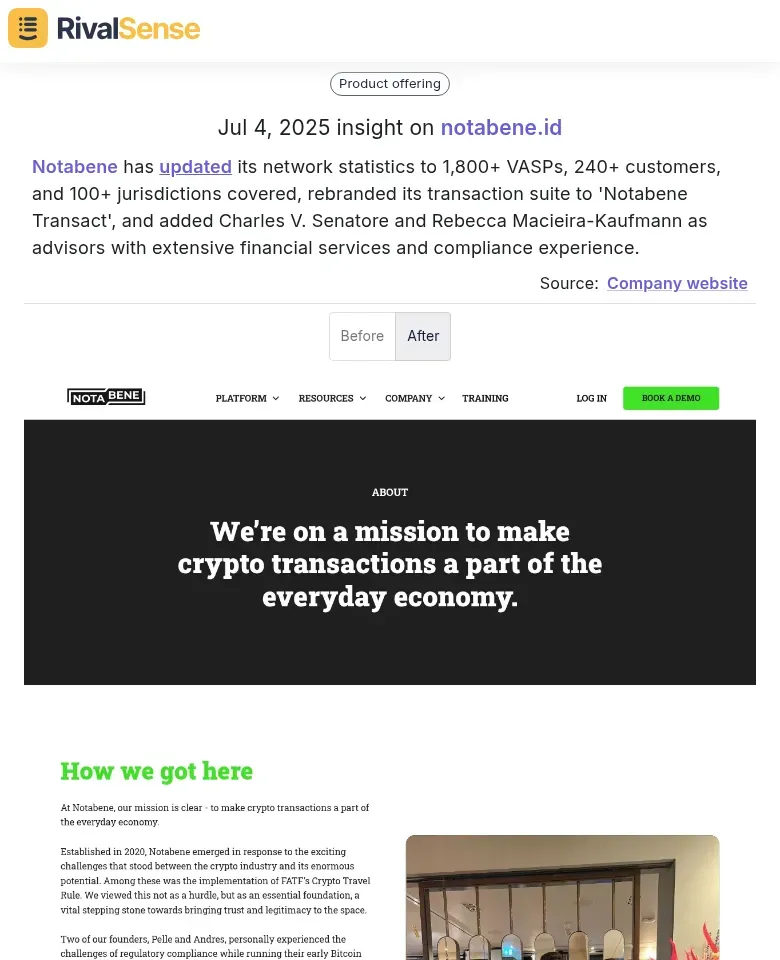AI & Automation: Competitive Intelligence for Growth
In today's fast-paced business environment, AI and automation are revolutionizing competitive intelligence (CI), transforming how companies gather, analyze, and act on market insights. The evolving role of AI in CI enables businesses to process vast amounts of data with unprecedented speed and accuracy, uncovering trends and opportunities that were previously invisible.
To leverage AI for actionable insights:
- Integrate AI-powered tools that scrape and analyze competitor data from multiple sources
- Utilize predictive analytics to forecast competitor moves
- Automate reporting to free up strategic bandwidth
By embracing these technologies, businesses turn CI into a strategic growth engine.
The Impact of AI on Competitive Intelligence
Artificial Intelligence fundamentally reshapes how companies gain competitive advantages through real-time insights and predictive capabilities. Modern AI tools automate data collection from websites, social media, and registries while identifying patterns humans might miss.
Key applications include:
- Real-time tracking of competitor pricing strategies
- Analysis of product launch impact through customer sentiment
- Predictive market trend forecasting
Practical implementation steps:
- Identify key competitors and critical data points
- Select AI tools aligned with business goals
- Integrate insights into decision workflows
- Continuously refine based on AI-driven forecasts
Automation Tools for Competitive Intelligence
Automation eliminates manual drudgery from competitive tracking while ensuring accuracy and timeliness. Platforms like RivalSense transform CI from reactive monitoring to proactive strategy by delivering automated alerts and consolidated reports.
Core benefits include:
✅ 90% reduction in manual data collection time
✅ Elimination of human error in tracking
✅ Real-time notifications for critical changes
Integration checklist:
| Step | Action |
|---|---|
| 1 | Audit existing CI processes |
| 2 | Map integration needs (CRM/analytics) |
| 3 | Configure automated data flows via API |
| 4 | Train teams on alert interpretation |
Competitive Intelligence in Action: Real-World Examples
Seeing concrete examples demonstrates how automated CI drives strategic decisions. These RivalSense insights showcase practical applications across different competitive dimensions:
🛠️ Product Strategy Tracking: ComplyAdvantage

Insight: ComplyAdvantage updated offerings to include 'Financial Crime Risk Intelligence' while removing 'Fraud Detection' from solutions.
Strategic value: Detecting product changes reveals competitor positioning shifts, helping you identify market gaps and innovation opportunities.
📅 Event & Sponsorship Monitoring: Socure

Insight: Socure hosting webinar on AI fraud (Jul 31) and sponsoring Sponsor Bank Leadership Forum (Sep 23-24).
Strategic value: Tracking events exposes competitor marketing priorities, enabling tactical counter-initiatives or partnership opportunities.
📈 Organizational Intelligence: Notabene

Insight: Notabene rebranded transaction suite, added advisors with compliance expertise, and reported 1,800+ VASPs coverage.
Strategic value: Monitoring leadership changes and growth metrics signals strategic pivots, helping benchmark your expansion efforts.
Strategies for Implementing AI & Automation
Successful adoption requires methodical planning aligned with business objectives. Start by targeting high-effort, repetitive tasks like pricing monitoring or social media tracking for automation.
Implementation framework:
- Audit processes - Identify manual CI bottlenecks
- Select tools - Prioritize AI features like predictive alerts
- Set KPIs - Track accuracy gains & decision speed
- Pilot test - Validate with 1-2 competitors
- Train teams - Develop data interpretation skills
- Optimize - Refine based on performance data
❗ Pro tip: Start with focused use cases before enterprise-wide rollout to demonstrate quick wins.
Future Trends in AI & Automation for Competitive Intelligence
Emerging technologies will further amplify CI capabilities through enhanced pattern recognition and predictive accuracy. Machine learning algorithms now analyze earnings calls and regulatory filings to forecast market disruptions months in advance.
Preparation checklist:
- [ ] Audit current tools for AI capabilities
- [ ] Research industry-specific ML/NLP solutions
- [ ] Upskill teams on interpreting AI insights
- [ ] Establish continuous model refinement cycles
Natural Language Processing (NLP) advancements will soon enable automatic summarization of competitor technical documentation, providing unprecedented R&D intelligence.
Conclusion: Leveraging AI & Automation for Growth
AI-powered competitive intelligence delivers transformative advantages through real-time insights and predictive capabilities. The transition from manual tracking to automated intelligence is no longer optional for market leadership.
Actionable next steps:
- Launch pilot projects for high-impact CI tasks
- Integrate AI tools with decision workflows
- Develop data fluency across teams
- Iterate strategies based on automated insights
🚀 Ready to outmaneuver competitors? Try RivalSense free today and get your first automated competitor report delivered immediately. Start Your Free Trial Now →
📚 Read more
👉 How PandaDoc's Revenue Ops Shift Can Transform Your Competitive Strategy
👉 Facebook Insights: Real-World Competitive Intelligence for B2B Leaders
👉 AI-Powered Insights: Transforming HR & Finance Competitor Analysis
👉 Decoding Market Entry: How Digital Rivals Are Transforming Strategies
👉 Decoding Competitor Moves: How to Respond When Rivals Launch New Products
